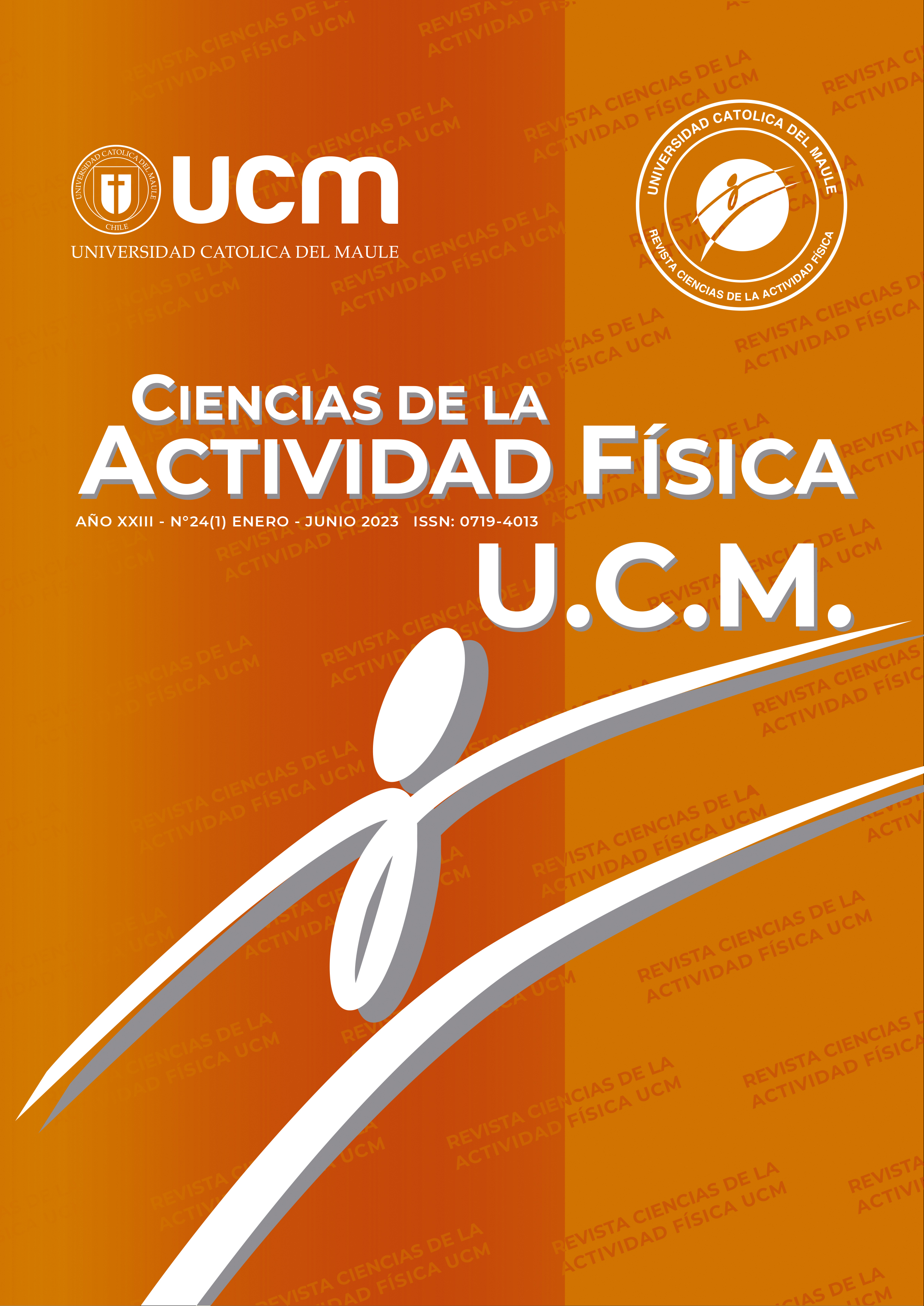Costa, A. M., Marques, M. C., Louro, H., Ferreira, S. S., & Marinho, D. A. (2013). The relative age effect among elite youth competitive swimmers. European Journal of Sport Science, 13(5), 437–444. https://doi.org/10.1080/17461391.2012.742571
Fernandez Ortega, J. A., Rodriguez Buitrago, J. A., & Sanchez Rodriguez, D. A. (2021). Aspectos centrales de la identificación y desarrollo de talentos deportivos: revisión sistemática (Central aspects of the identification and development of sports talents: a systematic review). Retos, 39, 915–928. https://doi.org/10.47197/retos.v0i39.79323
Folgar, M. I., Cristóbal, R. V., González, J. C. V., & Boubeta, A. R. (2014). El efecto de la edad relativa en la participación en el Plan nacional de tecnificación deportiva y la consecución de grandes éxitos deportivos en piragüismo. Apunts. Educacion Fisica y Deportes, 115, 46–53. https://doi.org/10.5672/apunts.2014-0983.es.(2014/1).115.04
Gouvea, M., Cyrino, E. S., Ribeiro, A. S., da Silva, D. R. P., Ohara, D., Valente-Dos-Santos, J., Coelho-E-Silva, M. J., & Ronque, E. (2016). Influence of Skeletal Maturity on Size, Function and Sport-specific Technical Skills in Youth Soccer Players. International Journal of Sports Medicine, 37(6), 464–469. https://doi.org/10.1055/s-0035-1569370
Itoh, R., & Hirose, N. (2020). Relationship Among Biological Maturation, Physical Characteristics, and Motor Abilities in Youth Elite Soccer Players. Journal of Strength and Conditioning Research, 34(2), 382–388. https://doi.org/10.1519/JSC.0000000000003346
Malina, R. M., Eisenmann, J. C., Cumming, S. P., Ribeiro, B., & Aroso, J. (2004). Maturity-associated variation in the growth and functional capacities of youth football (soccer) players 13-15 years. European Journal of Applied Physiology, 91(5–6), 555–562. https://doi.org/10.1007/s00421-003-0995-z
Meylan, C., Cronin, J., Oliver, J., & Hughes, M. (2010). Talent Identification in Soccer: The Role of Maturity Status on Physical, Physiological and Technical Characteristics. International Journal of Sports Science & Coaching, 5(4), 571–592. https://doi.org/10.1260/1747-9541.5.4.571
Musch, J., & Grondin, S. (2001). Unequal Competition as an Impediment to Personal Development: A Review of the Relative Age Effect in Sport. Developmental Review, 21(2), 147–167. https://doi.org/10.1006/drev.2000.0516
Organización Deportiva Bolivariana, (2022). XIX Juegos Bolivarianos Valledupar 2022. https://www.bolivarianosvalledupar.com/
Romann, M., & Fuchslocher, J. (2011). Influence of the Selection Level, Age and Playing Position on Relative Age Effects in Swiss Women’s Soccer. Talent Development and Excellence, 3(2), 239–245. https://www.researchgate.net/profile/Michael-Romann/publication/234173628_Influence_of_the_selection_level_age_and_playing_position_on_relative_age_
effects_in_Swiss_Women's_soccer/links/02bfe50fd38f39de1b000000/Influence-of-the-selection-level-age-and-playing-position-on-relative-age-effects-in-Swiss-Womens-soccer.pdf
Romann, M., & Fuchslocher, J. (2013). Influences of player nationality, playing position, and height on relative age effects at women’s under-17 FIFA World Cup. Journal of Sports Sciences, 31(1), 32–40. https://doi.org/10.1080/02640414.2012.718442
Salinas Molina, H. A. (2021). Efecto de edad relativa en la Liga Nacional de Básquetbol de Chile (LNB). Revista Ciencias de La Actividad Física UCM, 22(1), 1–11. https://doi.org/10.29035/rcaf.22.1.7
Schorer, J., Cobley, S., Büsch, D., Bräutigam, H., & Baker, J. (2009). Influences of competition level, gender, player nationality, career stage and playing position on relative age effects. Scandinavian Journal of Medicine & Science in Sports, 19(5), 720–730. https://doi.org/10.1111/j.1600-0838.2008.00838.x
Silva, L. A., Leonardo, L., Rodrigues, H. de A., & Krahenbühl, T. (2022). The Relative Age Effect in invasion team sports: A systematic review in youth sports. Retos, 46, 641–652. https://doi.org/10.47197/retos.v46.94211
Smith, K. L., Weir, P. L., Till, K., Romann, M., & Cobley, S. (2018). Relative Age Effects Across and Within Female Sport Contexts: A Systematic Review and Meta-Analysis. Sports Medicine, 48, 1451–1478. https://doi.org/10.1007/S40279-018-0890-8
The jamovi project (2021). jamovi. (Version 2.2) [Computer Software]. https://www.jamovi.org
Wattie, N., Schorer, J., & Baker, J. (2015). The Relative Age Effect in Sport: A Developmental Systems Model. Sports Medicine, 45(1), 83–94. https://doi.org/10.1007/S40279-014-0248-9


 https://orcid.org/0000-0001-6101-7066
https://orcid.org/0000-0001-6101-7066
